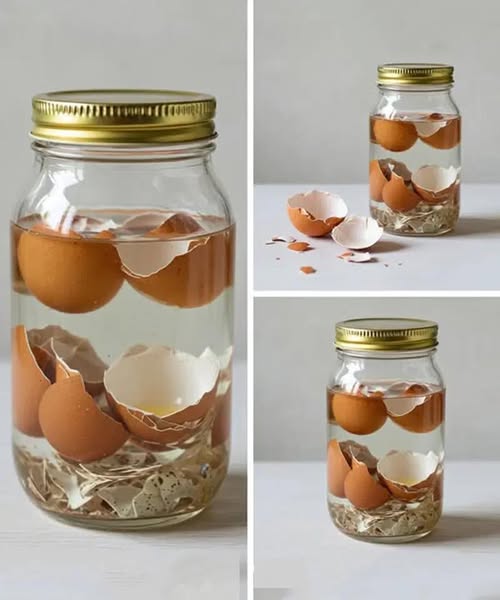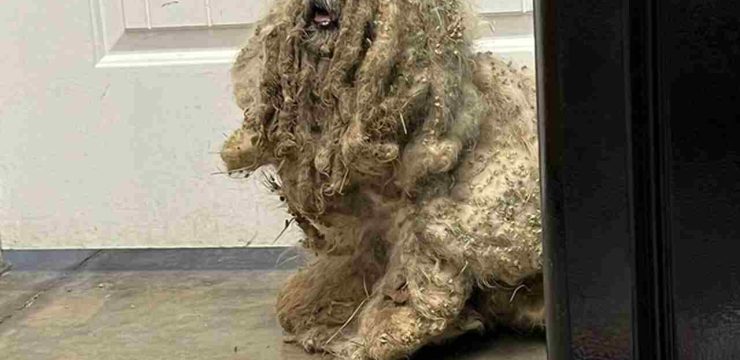Every day, millions of eggs are cracked open for breakfast, baking, or cooking, and just as quickly, their calcium-rich shells are tossed into the trash without a second thought. Yet those fragile, chalky shells are actually one of nature’s most powerful and affordable garden helpers. Instead of discarding them, there’s a simple trick that can turn this kitchen waste into plant-boosting gold—soak eggshells in hot water and see what happens.

Not only does this process soften the shells, making them easier to crush, but the water itself becomes a mineral-rich solution you can use to nourish your plants. Eggshells are composed of about 93% calcium carbonate, the same compound that helps plants develop strong cell walls and healthy root systems. They also contain trace amounts of magnesium, potassium, phosphorus, and nitrogen, all of which are essential nutrients for robust plant growth. When added to the soil, eggshells boost calcium levels, helping prevent blossom-end rot in tomatoes, peppers, and squash, improve soil structure and drainage, gradually balance soil pH by reducing acidity, and even deter soft-bodied pests like slugs and snails thanks to their sharp edges.
Unlike synthetic fertilizers, eggshells release their nutrients slowly and naturally, meaning there’s no risk of burning your plants. Soaking clean eggshells in hot (but not boiling) water starts a gentle extraction process that offers multiple benefits. The heat kills any lingering bacteria, such as salmonella, while encouraging minerals—especially calcium—to leach into the water. This also softens the shells, making them easier to crush into fine pieces later. After soaking for just 5–10 minutes, you’re left with two valuable products: mineral-enriched water that works like a mild calcium tonic for indoor or outdoor plants, and clean, sanitized shells that are ready to be dried and crushed.
Preparing eggshells for garden use is easy. After cracking your eggs, rinse the shells to remove any residue, then soak them in hot water for several minutes to sanitize and soften them. Spread the shells on a towel or baking sheet to air-dry for 24–48 hours, or speed up the process by baking them at 200°F (95°C) for about 10 minutes. Once dry, crush the shells into small chips or a fine powder using a rolling pin, mortar and pestle, or blender. Powder is ideal for direct soil application, while small chips work well as mulch. There are several ways to use eggshells in your garden.
First, you can mix crushed shells directly into the soil as a natural fertilizer, sprinkling them into planting holes or blending them into potting mixes. This method works particularly well for calcium-hungry plants like tomatoes, peppers, broccoli, and roses. Second, you can use crushed shells as a pest-repellent mulch. Scatter them around the base of plants, and the sharp edges will deter slugs, snails, and cutworms without harming beneficial insects. Third, you can use whole shells as biodegradable seed-starting pots. Carefully crack the tops off eggs, empty and rinse the shells, fill them with soil, and plant seeds inside.
When seedlings are ready, plant the entire shell directly in the ground, where it will break down and feed the growing plant. There are a few important tips and precautions to keep in mind. Always clean and dry eggshells before using them, as raw residue can attract pests or cause mold. Crush them thoroughly, since large pieces can take months to break down and release nutrients. Avoid adding excessive amounts of eggshells to your soil, as too much can raise pH levels and make the soil overly alkaline. Never use dyed or decorated Easter egg shells, since chemicals and artificial dyes can harm your plants.
The humble eggshell you might otherwise toss in the trash is not waste—it’s free fertilizer, natural pest control, and a source of long-term soil enrichment. By simply soaking, drying, and crushing your eggshells, you’re not only reducing kitchen waste but also giving your garden a sustainable and effective nutrient boost. The next time you scramble eggs, make an omelet, or boil them for a salad, pause before throwing the shells away. Save them, prepare them, and let your plants enjoy the benefits. Some of the best gardening tools aren’t bought at the store—they’re found right in your kitchen, one egg at a time.





